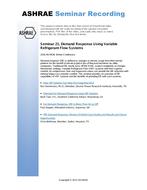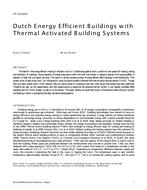The influence of climatic conditions on building structures can be significant. For example, outdoor air dry bulb temperature influences transmission gains and losses through the building envelope, ventilation sensible loads, and performance of air cooled heat pumping systems. The magnitude and variation of outdoor air humidity has an influence on moisture migration through building envelopes and ventilation latent loads. The character of wind (speed and direction) can significantly influence building envelope infiltration rates. Extreme sequences of solar radiation are important due to its influence on building envelope heat gains and solar gains through building fenestration systems.
To evaluate a specific design, a sequence of intervals on the order of the system’s time constant is needed. Extreme hourly weather data, are readily available but are only appropriate when thermal capacitance effects are negligible. In addition, “binned” data are of limited usefulness since the temporal nature of the weather data is lost. Examination of long term hourly data could be computationally difficult because the set may be 30 or more years. If a suitable reporting location is not available, interpolation between stations may be required, introducing additional uncertainty into the energy calculations.
To alleviate these difficulties a methodology and a computer program are developed to synthesize extreme weather sequences of dry bulb temperature, humidity ratio, wind speed and total horizontal radiation for a given time of the year, location and sequence duration from one to seven days using readily available data as inputs.
Product Details
- Published:
- 1998
- File Size:
- 1 file , 6.4 MB
- Product Code(s):
- D-28845


